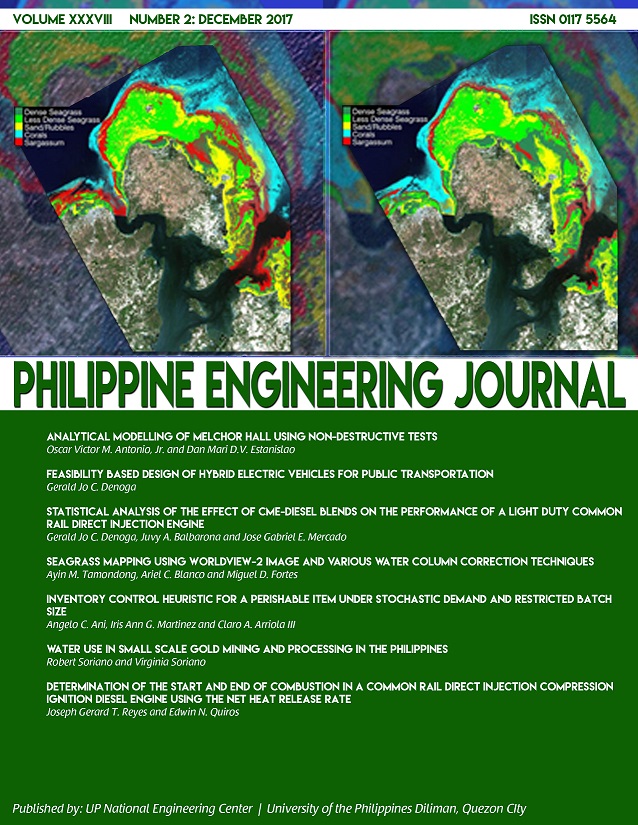Analytical Modelling of Melchor Hall Using Non-Destructive Tests
Abstract
This study aims to generate a digital and analytical model of Melchor Hall using the program SAP2000 together with the details obtained from the Melchor Hall as-built plans, 1949 Palma Hall plans which substituted for the original 1949 Melchor Hall plans, and the results obtained from the three non-destructive tests – Rebar Scanning Tests, Schmidt Rebound Hammer Test and Ultrasonic Pulse Velocity Test. These non-destructive tests were conducted to determine the material and section properties primarily targeting the current concrete compressive strength and rebar configuration of the structural members such as beams and columns. The said model was subjected to Nonlinear Static Pushover Analysis while applying dead and live loads prescribed by the National Structural Code of the Philippines 2010 and lateral earthquake loads based on the Uniform Building Code 97. The said analysis monitored 12 joints on the topmost portions of the model along its length to obtain the pushover curves that determined if the structure’s capacity meets its demand. The research showed that analytical models can still be created for old reinforced concrete structures with the help of non-destructive tests. Material properties of old reinforced concrete members were also evaluated using research and non-destructive testing. It was proven through non-destructive testing that the structural elements of both Melchor Hall and Palma Hall are similar. Analysis of the generated analytical model showed that the structure can withstand earthquake loads defined using the UBC 97. However, retrofitting measures are still needed by the structure in order to prevent the formation of plastic hinges that can put the lives of the people occupying the structure at high risk.
Keywords—non-destrucive testing; ultrasonic pulse velocity; nonlinear static pushover analysis


